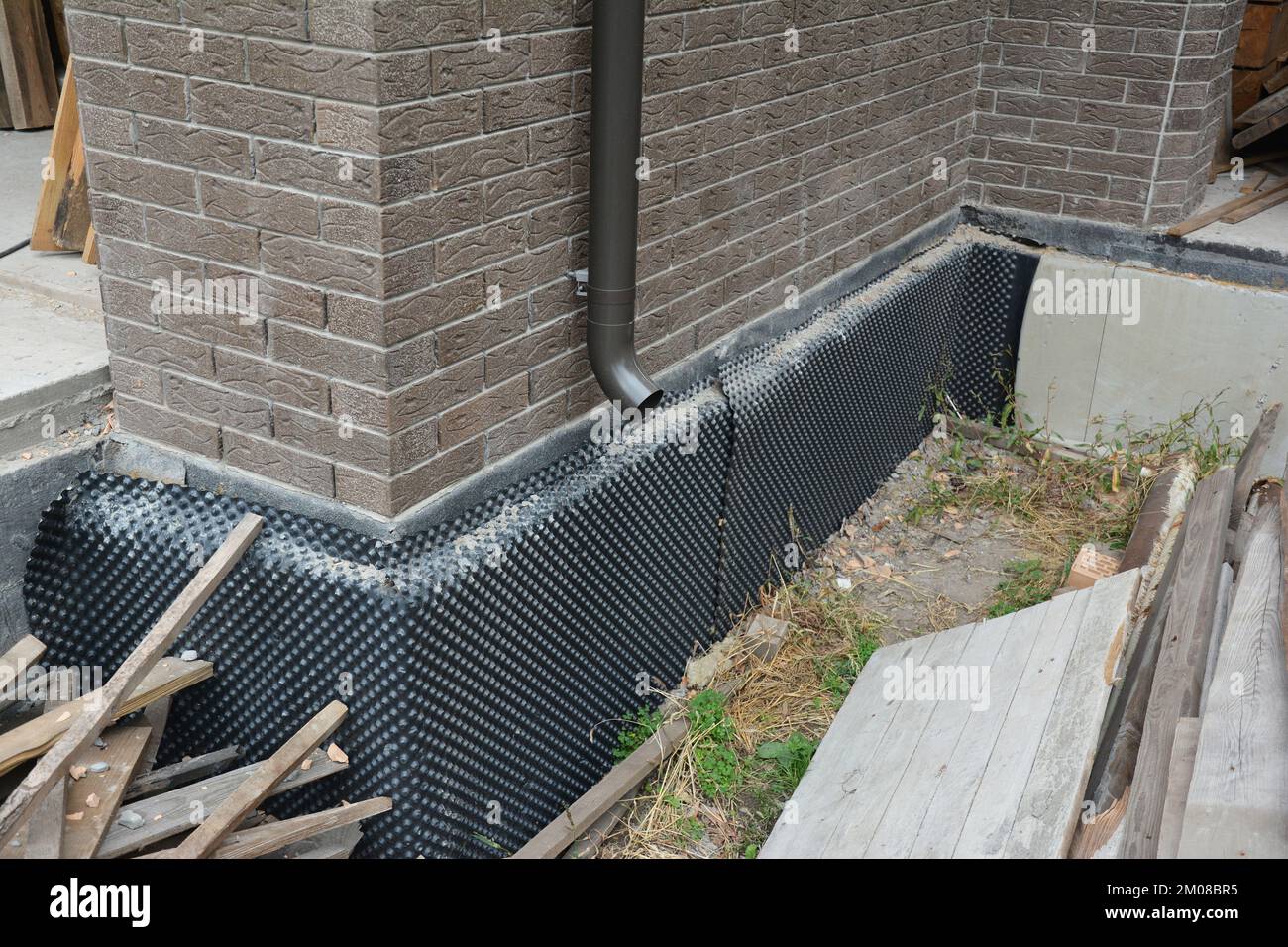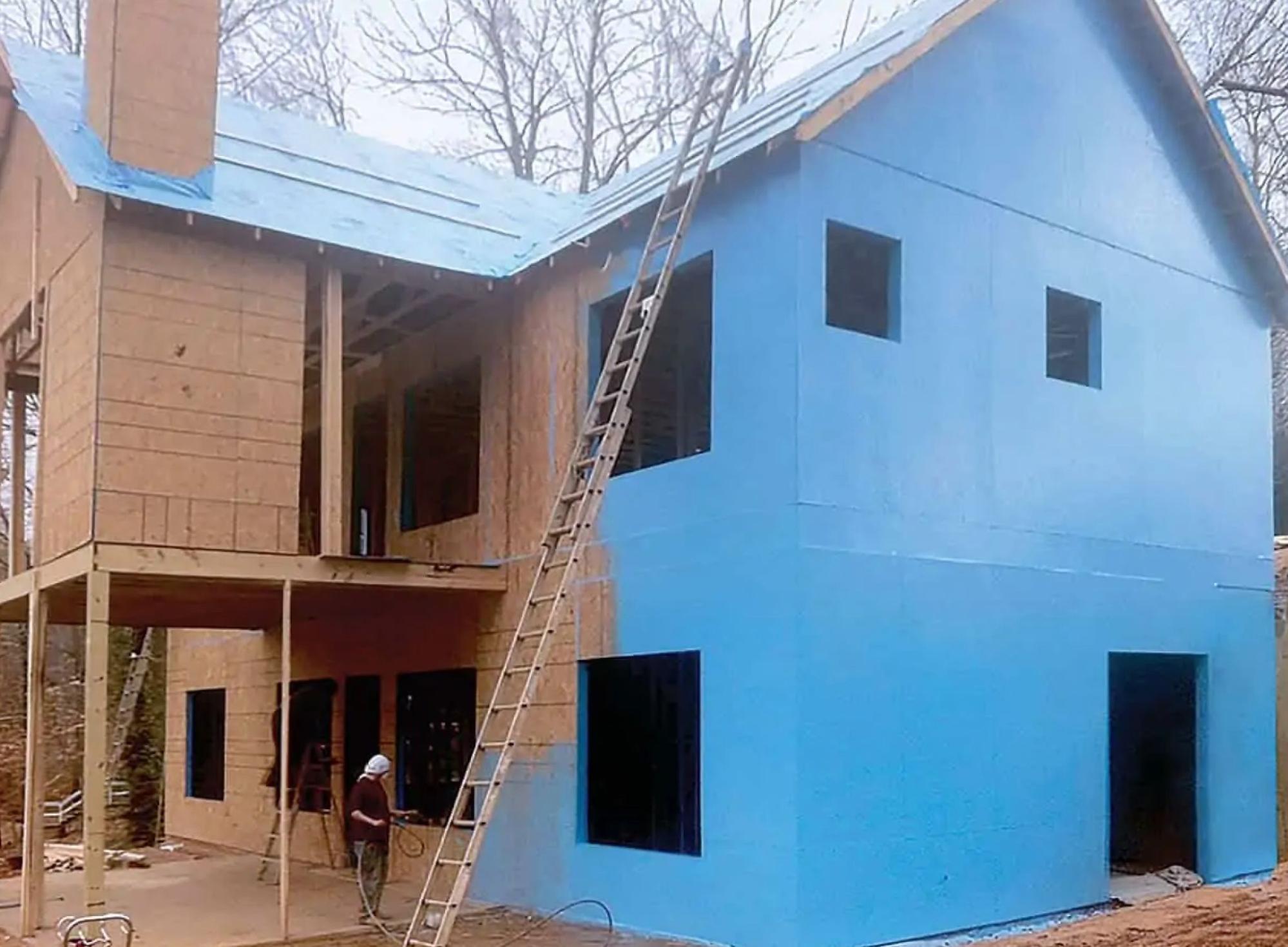Expert-approved tips for damp specialist newcastle to maintain your building's structure
Exploring the Different Strategies and Solutions for Effective Damp Proofing
Dampness in buildings presents substantial challenges to both structural stability and interior air top quality. Different strategies and solutions have emerged to battle this prevalent concern. From traditional damp-proof membrane layers to innovative chemical treatments, each method provides special benefits. Recognizing these alternatives is crucial for reliable moisture control. However, choosing the right service depends on details structure problems and demands, motivating more expedition into the most effective damp proofing strategies offered.
Comprehending the Root Causes Of Dampness
Although wetness can emerge from different sources, understanding these reasons is essential for efficient remediation. Commonly, moisture stems from three primary sources: climbing damp, permeating moist, and condensation. Rising moist occurs when groundwater takes a trip upwards via permeable materials, such as block or stone, commonly because of an absence of a reliable barrier (mould treatment newcastle). Passing through moist is generally triggered by outside variables, including roof covering leaks, defective seamless gutters, or damaged wall surfaces, enabling water to penetrate a building. Condensation, on the other hand, arises from excess moisture in the air, frequently aggravated by poor air flow and temperature level distinctions, resulting in water droplets basing on surface areas. Recognizing these underlying concerns is essential, as each kind of dampness needs a customized technique for remediation. Appropriate analysis helps in figuring out one of the most reliable remedies, ultimately protecting the architectural stability of a structure and boosting interior air top quality
Conventional Damp-Proof Membranes

Chemical Damp-Proofing Solutions
Chemical damp-proofing options offer a cutting-edge method to avoid wetness intrusion in structures. These methods typically include the application of fluid chemicals that penetrate stonework and create an obstacle versus increasing wet. Typically utilized chemicals consist of silanes, siloxanes, and other water-repellent representatives that react with surface area materials to develop a hydrophobic layer.The application procedure typically requires exploration openings into the wall surfaces, infusing the chemical option, and enabling it to cure. This method is specifically useful for older structures where traditional damp-proof membrane layers might be impractical. Chemical damp-proofing can be much less turbulent and extra cost-effective than comprehensive remodelling projects.While efficient, these options depend on correct application and ecological problems for peak efficiency. mould treatment newcastle. Routine maintenance and tracking are necessary to assure the durability of the damp-proofing treatment. In general, chemical damp-proofing represents a versatile choice for safeguarding structures against moisture-related damage
Tooth Cavity Wall Construction Techniques
Dental caries wall surface building methods provide many benefits, especially in wetness control and energy efficiency. By including an air void in between 2 layers of stonework, these walls effectively mitigate water access while boosting insulation. This combination not only protects frameworks from moisture but additionally adds to reduced power consumption.
Benefits of Dental Caries Walls
When thinking about effective wet proofing methods, the benefits of tooth cavity walls stand out plainly. Tooth cavity walls include 2 separate layers, developing an air gap that properly decreases wetness infiltration. This style decreases the risk of wetness, as the outer wall works as an obstacle against rainfall and water ingress. Additionally, dental caries wall surfaces improve thermal insulation, which contributes to energy performance by reducing warm loss. They likewise provide audio insulation, aiding to produce a quieter interior setting. The air gap permits for air flow, which assists in moisture control and decreases the probability of mold and mildew development. These benefits not just enhance the total convenience of a structure yet additionally add to its longevity and structural stability.
Moisture Control Techniques
Reliable wetness control techniques are vital in tooth cavity wall building and construction to ensure long-term security against wetness. One main technique entails the incorporation of weep holes, which assist in water drainage from the cavity, avoiding build-up. Additionally, making use of breathable membranes can aid manage dampness levels while permitting caught vapor to run away. Appropriate positioning of insulation is likewise vital, as it should not obstruct water drainage paths. In addition, making sure that the outer leaves of the dental caries wall are built with water-resistant materials boosts overall longevity. Normal maintenance checks are necessary to recognize any blockages or damage early, securing the framework's integrity. Inevitably, a mix of these techniques forms a robust defense against wetness invasion in tooth cavity wall surfaces.
Insulation and Energy Effectiveness
Insulation plays a crucial duty in boosting power performance within dental caries wall surface building and construction. By integrating protecting materials, these walls produce a thermal barrier that reduces warm loss and minimizes power intake. Effective insulation not only aids preserve a stable interior temperature yet additionally alleviates the danger of wetness, as it avoids condensation within the wall surface dental caries. Different strategies, such as the use of inflexible foam boards or mineral wool, can be utilized to attain excellent insulation performance. In addition, proper installation is crucial to ensure that gaps and voids are lessened, which can otherwise compromise power effectiveness. Eventually, a well-insulated cavity wall surface contributes significantly to overall sustainability and decreases heating & cooling prices for house owners.
External Damp Proofing Methods
Exterior damp proofing approaches are crucial for securing structures from dampness infiltration. Two reliable methods include the application of water resistant membranes and the installation of French drains. These options assist mitigate water build-up and protect the honesty of structures.
Waterproof Membrane Application
While numerous techniques exist for preventing wetness access, the application of water resistant membrane layers remains an extremely reliable external moist proofing strategy. These membranes are commonly made from materials such as polyethylene, rubber, or changed bitumen, supplying a durable obstacle against water penetration. The setup procedure entails applying the membrane to the external surfaces of foundations or walls, ensuring total insurance coverage to avoid leakages. Proper bond and securing at joints are essential to optimizing performance. Water-proof membranes can be applied in various types, consisting of fluid layers and sheet membrane layers, permitting adaptability based upon the details needs of the framework. This approach not just shields structures from moisture however likewise improves their durability and structural stability.
French Drain Installation
One reliable technique for handling groundwater and protecting against moisture accumulation around a building's structure is the setup of a French drainpipe. This drainage system includes a trench filled with gravel and a perforated pipeline that reroutes surface water away from the structure. Correct installation requires mindful preparation, making sure that the drain slopes far from the structure to help with optimal water flow. In addition, the place of the drain is essential; it needs to be placed in areas vulnerable to merging or excess wetness. Regular upkeep, including clearing up debris from the crushed rock and making sure the pipe continues to be unhampered, is necessary for long-term efficiency. Eventually, a well-installed French drainpipe can considerably reduce the danger of water-related issues in structures and basements.
Interior Waterproofing Strategies
Inside waterproofing strategies are crucial for protecting a structure's inside from wetness infiltration and possible water damage. These strategies usually entail the application of specialized materials and methods designed to produce a dampness obstacle within the structure. One typical strategy is using water resistant finishes or sealants on walls and floors, which protect against dampness from penetrating surfaces.Additionally, setting up indoor water drainage systems, such as sump pumps, can effectively handle water build-up in cellars and creep spaces. Another method includes using vapor obstacles, which are mounted to inhibit wetness activity from the ground right into living spaces.Moreover, dealing with any type of fractures or voids in wall surfaces or structures with ideal sealers guarantees a complete protection versus water breach. By applying these indoor waterproofing approaches, residential property proprietors can substantially reduce the danger of mold growth, structural damages, and various other moisture-related concerns. Correct implementation of these methods is vital for long-lasting protection and building honesty.
Routine Maintenance and Evaluation Practices
Routine maintenance and examination methods are crucial for ensuring the long-lasting efficiency of wet proofing solutions in any building. Regular checks make it possible for homeowner to identify early signs of moisture intrusion, such as peeling paint, mold and mildew development, and stuffy smells. These indicators can signify underlying problems that require instant attention.Inspections ought to be performed at the very least yearly, concentrating on prone areas like cellars, crawl areas, and exterior walls. Throughout these evaluations, homeowner need to analyze sealers, drainage systems, and air flow to verify they work correctly.Additionally, keeping seamless gutters and downspouts is important, as stopped up systems can lead to water build-up near the foundation. here Carrying out a regular maintenance routine, along with timely repair services, can considerably prolong the life-span of damp proofing procedures and protect the structural stability of the structure. Proactive measures eventually add to the total health and wellness of the living atmosphere.
Regularly Asked Inquiries
For How Long Does Damp Proofing Normally Last?
The duration of damp proofing effectiveness differs, normally lasting between 20 to 50 years. Aspects such as application top quality, ecological problems, and upkeep techniques greatly influence the longevity of the damp proofing treatment.

Can I Damp Proof My Home Myself?
The individual contemplated the feasibility of DIY damp proofing. With proper research and the right materials, it is possible. They also identified the significance of professional advice to guarantee lasting efficiency and stop future issues.
What Are the Signs of Ineffective Damp Proofing?
Signs of inadequate moist proofing include persistent stuffy smells, visible mold and mildew development, peeling paint, wet spots on walls, and timber decay - mould treatment newcastle. Homeowners ought to attend to these problems quickly to prevent more damages and wellness problems
Does Damp Proofing Affect Indoor Air Top Quality?

How Much Does Expert Damp Proofing Cost?
Specialist wet proofing expenses differ significantly, usually varying from $1,000 to $5,000 depending upon the residential or commercial property's dimension, the extent of the moist concern, and chosen techniques. Each situation needs a tailored evaluation for exact pricing. Frequently, dampness originates from 3 key sources: increasing wet, penetrating moist, and condensation. When taking into consideration reliable moist proofing approaches, the advantages of tooth cavity wall surfaces stand out plainly. External damp proofing techniques are crucial for safeguarding structures from wetness seepage. While various methods exist for stopping moisture ingress, the application of water resistant membrane layers continues to be a highly effective external moist proofing method. Indications of inefficient wet proofing consist of relentless musty odors, noticeable mold and mildew development, peeling paint, moist spots on walls, and timber decay.